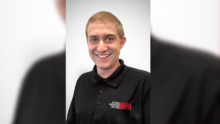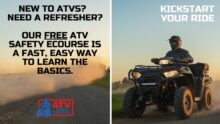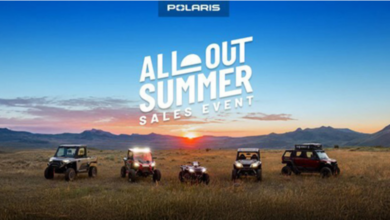BRP Likes Playing Two-Stroke Card
EDITOR’S NOTE: On Dec. 17, 2004, Jose Boisjoli, president and CEO of Bombardier Recreational Products (BRP) and Pierre Pichette, BRP’s vice president of communications and public affairs, met with editors and executives of Ehlert Publishing Group’s Powersports Business magazine and several of its watercraft, ATV and snowmobile magazines.
The purpose of the meeting was to discuss BRP’s progress in the first year after it was spun off as a separate corporation from Bombardier, Inc. BRP was sold to Bain Capital, the Bombardier family and Caisse de depot et placement du Quebec. Bain owns 50% of BRP; family 35% and Caisse de depot et placement du Quebec,15%.
Here is a transcript of that meeting, edited for clarity and brevity. For articles specific to the outboard market, see the March issue of Boating Industry magazine.
BRP comments are from Boisjoli unless otherwise indicated. The first part of this report ran in the Jan. 24, 2005, issue of Powersports Business.
EHLERT: In Europe, there’s an emerging street market. Are there plans to enter the market?
BRP: We are in the market there, and I’d like to add we were the first ones to homologate an ATV for street usage. We started that in 2001, 2002. We’ve been growing significantly outside North America because of that very reason. As far as the street or homologated ATV, sales are growing significantly compared to the rest of Europe. We have a good position in that category.
EHLERT: What exactly does homologated mean?
BRP: (When an ATV is converted from off-road to street use according to European regulations, it is said to be “homologated.”) You have mirrors and flashers on the vehicle. We must meet some regulations about the brake system. We also have emissions and standards. And we must limit the speed and horsepower of the vehicle.
EHLERT: What’s the limit on horsepower?
BRP: It varies by country, and it’s quite low. The idea of the regulation is that Europe has many small farms, not large farms like in Canada and the U.S. In Europe, people were not able to go from one farm to the other. The idea was to give access to those customers who can go on the road.
One of our concerns right now is the people who abuse the system and unlock the horsepower limitations and go on the road at higher speeds.
I think the ATV homologated for the roads would stay because of the need for people to go from one place to another at low speeds. But someday, someone will regulate ATV at high speeds on the road, which could be dangerous.
EHLERT: Does the new European ATV Association influence these decisions?
PIERRE PICHETTE: These issues are being discussed by the young ATV Association in Europe, but, as Jose said, the main issue is safety.
EHLERT: Is there a move for one common market regulation?
PICHETTE: That may be the easiest way to go, but let’s not kid ourselves. Every two years, there are more countries, so by the time we could get a one-liner for a European union … sometime, somewhere.
OUTBOARD ENGINE BUSINESS
BRP: When we acquired OMC in 2001, OMC was in development of its second-generation of an EFI engine. It was an unbelievable technology. When we acquired OMC it was half way done and we were not sure of the result, but it turned out extremely well.
We have all the advantages of a four-stroke with the advantages of a two-stroke. (We offer) fuel economy, quiet sound, a better and smaller package, weight, which is significantly lower than a four-stroke, and the emissions. Today, we are cleaner than most four-strokes.
In parallel, we did continue to develop E-Tec. We launched our first four E-Tec engines in the spring of 2003. We have been delivering E-Tec engines in the 40-, 50-, 60- and 90-horsepower categories for a year now. Last summer, we introduced three other additional models, the 200, 225 and 250. Obviously our goal is to have a full range of E-Tec engines.
Our competitors are focusing on four-strokes, and we believe two-strokes are there to stay. Two-strokes (that are) clean have a lot of advantages compared to four-strokes. We are convinced that we can have a good business with a two-stroke engine in the outboard business because of the E-Tec technology.
EHLERT: Consumers are hearing more about the four-stroke engine and are wondering if they will be forced to switch to four-strokes. How are you getting out the E-Tec message?
BRP: We’ve been selling E-Tec engines for more than a year now and four-strokes for longer than that. We have done a lot of focus groups (to determine) what customers are looking at. Basically, we’ll target the customer who is looking for performance and the customer who is looking for a high-tech engine.
We will have a complete marketing program that will be launched at the beginning of 2005. (The tone of our marketing campaign will be the benefits of the E-Tec two-stroke engine line vs. other competitive four-stroke models. Smaller numbers are greater than bigger, older numbers.)
We believe with the E-Tec technology we have an incredible product and package. We could not be very aggressive promoting it up until now because we only had four models last year. Now we have seven models and, going forward, we will have a full range of models.
EHLERT: Does E-Tec have an application to snow, PWC and ATVs? Are we likely to see a spread of this technology to other markets?
BRP: Where there is advantage to have a two-stroke, we could use that technology everywhere. In snowmobile, I believe there is a market for four-stroke, but there is a bigger market for two-strokes. We are doing a very good job with SDI (semi-direct injection). With SDI, we are passing all the emissions (standards). Four-stroke are good for certain applications, and two-strokes are good for other applications. Where it makes sense to use a two-stroke, this is an asset for us, there’s no doubt about it.
EHLERT: Are there any limitations to using this; is other development needed?
BRP: No, we could do it tomorrow.
EHLERT: Is there a chance you could use the (watercraft) 4-Tec technology in outboards?
BRP: We could do it. You need to realize that we are in a unique situation with Rotax. The team at OMC outboards has developed that technology with E-Tec, and we will never do that again. OMC spent millions of dollars to do it. We have it and because we believe in two-strokes in our industry, we’ll make sure we continue to evolve the technology, but to redesign the technology from scratch is a huge task.
There was a lot of uncertainty when we acquired OMC in 2001, but we have made a lot of progress in the last three years. Now we have a more complete lineup with a new technology and we feel very strong about our strategy.
THE ROTAX BUSINESS
BRP: Rotax manufactures our engine for ATVs, watercraft, snowmobile and sport boats. And also, we have a good outside business. We call that our outside Rotax external business.
The way I would position Rotax is that it’s the best in the industry for adapting existing technology to a package. I think the strength of Rotax is to adapt existing technology and package it for product application. We are recognized in the industry for innovation and performance and Rotax is a key element and an asset that helps us achieve that.
In motorcycle, we have two good customers in BMW and Aprilia. Aprilia had a tough summer, but now that has been acquired by Piaggio they will continue to do business with us.
In the kart business, we manufacture a lot of kart engines and a complete kart. And starting next year, we will start to sell a direct-drive kart engine. We had a lot of requests for that and we feel it could be a good business. We also have a full line of ultralight aircraft engines; four- and two-stroke engines.
INTERNATIONAL BUSINESS
BRP: We define International as all markets outside of North America, except Scandinavia. This year, we have significant growth in Europe, (more than 20%); Australia, (more than 30%); and we have our leadership position in Scandinavia.
Going forward, we intend to continue to grow in what we call the traditional market. We feel we can grow significantly in outboard and ATV. And also on the international level. One day we will be on the road (with a motorcycle), but the focus right now is on those three items.
After a year as a stand-alone company, I’d say we are in a very strong position because we have innovative product in the product line. We have a strong snowmobile lineup. If I look to watercraft, sport boats and ATV, we have good product there. Outboard, the lineup of E-Tec is not full but we are getting there.
In every product line where we are active we have good product. If there is one thing we have done well, it is implementing a product development process in the beginning of 2000. It has paid off big time. We have been able to come to the market with innovative product, but also good quality the first time.
We are a leader in several of our markets and we have a strong dealer network worldwide, and we have a good plan to reposition BRP, despite the stronger the Canadian dollar.
EHLERT: What is your rule of thumb as far as the time it takes to develop a product?
BRP: It depends. If it’s from scratch, like the Rev, it’s between two and three years.
EHLERT: So, where are you on a motorcycle?
BRP: Somewhere in there. One of things we’ve looked at, at one point, was to have a dual-purpose machine. Obviously, the snowmobile market is a good industry, but you can only use the product for three months during the season. We were looking at whether or not we can have a snowmobile for winter and convert the vehicle for summer use. But it will take more than three years for that one. We have not been able to make it work.
EHLERT: What about the side-by-side utility machine market?
BRP: We believe more in tandem than side-by-side. That’s why we are pushing the Outlander Max so much. Again, the side-by-sides are very good for utility purpose, but if you want a more recreational vehicle, the tandem is better. With the Outlander Max we designed a good tandem with good balance and a safe vehicle.
EHLERT: Is there a future redesign for the Traxter?
BRP: The Traxter is a good machine, but the focus will be on the Outlander platform.
EHLERT: Bombardier Corp. is having difficulties, and while there is no direct relationship between the two companies, there is cross ownership through the Bombardier family. Can you discuss the situation and its possible impact?
BRP: Today, between Bombardier and BRP there is no link now, except that the family is still a major shareholder of Bombardier and BRP.
EHLERT: Can you explain the John Deere joint venture and how it’s going?
BRP: I cannot talk about John Deere, I’m not allowed, it’s their business. We are having a good relationship and it’s a good company.
EHLERT: Can you talk about what we might see from the venture in 2005?
BRP: No. The only thing I can tell you is to repeat why we’ve done this. We felt our dealer network was more skewed toward recreational products and John Deere had a good dealer network for its industry.
EHLERT: Will BRP do more joint ventures?
BRP: I think up to now, it has been satisfactory for us, but it was a complimentary strategy and there are not too many other companies where we can get complimentary strategy. If there is, then I’m open to it.
EHLERT: We talked earlier of ATV production moving to Taiwan and watercraft production in Mexico. Are there plans to move other production to foreign areas?
BRP: Valcourt will focus on high-end and high-volume product. That’s true for the vehicles and also the components. In Valcourt, we are stamping components, but if we look to the list of components we have, we realized last year that about 75% of the components we have represent 15% of the labor.
And then the other 25% of the components represent about 85% of the labor. So, basically, we will focus on the high volume. This year, we will farm out 75% of the components, which is 15% of labor, to simplify our business.





